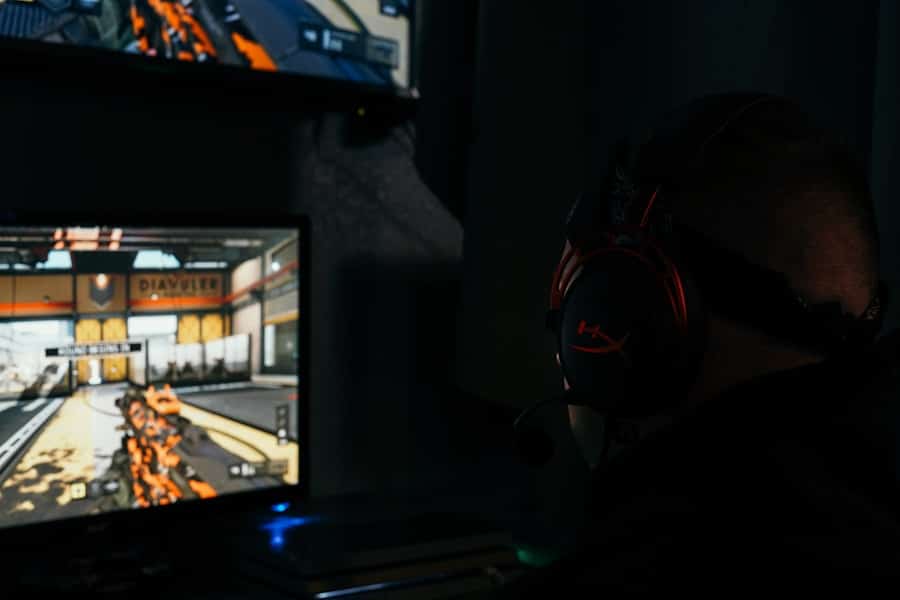The integration of artificial intelligence (AI) into game development has revolutionized the industry, transforming how games are designed, developed, and played. Historically, game development relied heavily on traditional programming techniques, where developers manually coded every aspect of gameplay. However, with the advent of AI technologies, developers can now create more immersive and responsive gaming experiences.
AI not only enhances the realism of non-player characters (NPCs) but also optimizes various aspects of game performance, making it a crucial component in modern game design. As the gaming landscape continues to evolve, the role of AI is becoming increasingly prominent. From procedural content generation to advanced player analytics, AI is reshaping the way developers approach game creation.
The ability to analyze vast amounts of data and adapt gameplay in real-time allows for a more personalized experience for players. This shift towards AI-driven methodologies is not merely a trend; it represents a fundamental change in how games are conceptualized and executed, paving the way for innovations that were previously unimaginable.
Key Takeaways
- AI is revolutionizing game development by enabling performance optimization, bug detection and fixing, predictive analytics, dynamic resource allocation, and player behavior analysis.
- AI-powered performance optimization tools can analyze and improve game performance by adjusting settings and resources in real-time.
- Real-time monitoring and analysis using AI can help developers identify and address issues as they occur, leading to a smoother gaming experience.
- Automated bug detection and fixing with AI can significantly reduce the time and effort required for debugging, improving overall game quality.
- Predictive analytics for hardware and software optimization can help developers make informed decisions to enhance game performance and user experience.
AI-powered Performance Optimization Tools
Performance optimization is a critical aspect of game development, as it directly impacts player experience. AI-powered performance optimization tools have emerged as essential resources for developers seeking to enhance the efficiency and responsiveness of their games. These tools utilize machine learning algorithms to analyze performance metrics and identify bottlenecks in real-time.
For instance, tools like Unity’s ML-Agents allow developers to train AI agents that can optimize game performance by learning from player interactions and adjusting parameters accordingly. Moreover, these optimization tools can predict potential performance issues before they arise. By analyzing historical data and player behavior patterns, AI can suggest adjustments to graphics settings, frame rates, and load times, ensuring a smoother gaming experience.
This proactive approach not only saves developers time but also enhances player satisfaction by minimizing lag and improving overall gameplay fluidity. As a result, AI-powered performance optimization tools are becoming indispensable in the toolkit of modern game developers.
Real-time Monitoring and Analysis

Real-time monitoring and analysis are vital components of contemporary game development, enabling developers to track player interactions and system performance continuously. AI plays a pivotal role in this process by providing insights that were previously difficult to obtain. Through the use of advanced analytics platforms, developers can monitor key performance indicators (KPIs) such as frame rates, latency, and server load in real-time.
This data allows for immediate adjustments to be made, ensuring that players enjoy a seamless experience. For example, companies like Riot Games utilize AI-driven analytics to monitor player behavior during live events. By analyzing data streams in real-time, they can identify trends and anomalies that may indicate issues such as server overload or gameplay imbalances.
This capability not only helps in maintaining optimal performance but also informs future game design decisions. The ability to react swiftly to player needs and system demands is a significant advantage that AI brings to the table, allowing developers to create more engaging and responsive gaming environments.
Automated Bug Detection and Fixing
The process of identifying and fixing bugs is often one of the most time-consuming aspects of game development. However, AI has introduced automated bug detection and fixing systems that streamline this process significantly. These systems leverage machine learning algorithms to analyze codebases and gameplay footage, identifying potential bugs before they become problematic.
For instance, tools like DeepCode utilize AI to scan code for vulnerabilities and suggest fixes based on best practices learned from vast datasets. In addition to identifying bugs, AI can also assist in automating the fixing process. By learning from previous bug fixes and understanding common coding patterns, AI systems can propose solutions that developers can implement with minimal intervention.
This not only accelerates the development cycle but also reduces the likelihood of human error during the debugging process. As a result, developers can focus more on creative aspects of game design rather than getting bogged down by technical issues.
Predictive Analytics for Hardware and Software Optimization
Predictive analytics is another area where AI is making significant strides in game development. By analyzing historical data on hardware performance and player behavior, AI can forecast future trends and optimize both hardware and software configurations accordingly. This capability is particularly valuable in an industry where technology evolves rapidly, and players often upgrade their systems to keep up with demanding graphics and processing requirements.
For example, predictive analytics can help developers understand which hardware configurations are most popular among their player base.
Additionally, predictive models can simulate how changes in software updates might affect performance across different hardware setups, allowing developers to make informed decisions before rolling out updates.
This proactive approach not only enhances player satisfaction but also ensures that games remain accessible to a broader audience.
AI-driven Dynamic Resource Allocation

Optimizing Performance with AI-Driven Systems
Maintaining optimal performance in online multiplayer games is crucial, as server loads can fluctuate dramatically based on player activity. AI-driven systems can intelligently allocate resources such as bandwidth and processing power in real-time, ensuring that players experience minimal lag and downtime. By analyzing player behavior patterns and server demands, these systems can predict peak usage times and adjust resources accordingly.
Real-World Applications in Cloud Gaming
Cloud gaming services like Google Stadia utilize AI algorithms to manage server loads dynamically. When a sudden influx of players occurs, the system can automatically allocate additional resources to maintain performance levels without manual intervention from developers or system administrators.
Enhancing the Gaming Experience and Reducing Operational Costs
This level of automation not only enhances the gaming experience but also reduces operational costs by optimizing resource usage based on actual demand rather than static allocations.
AI-based Player Behavior Analysis
Understanding player behavior is essential for creating engaging gaming experiences that resonate with audiences.
By collecting data on player actions, preferences, and engagement levels, these tools can identify trends that inform design decisions and marketing strategies.
For example, companies like Ubisoft employ AI-driven analytics to study player engagement metrics across their titles. By analyzing data such as playtime, completion rates, and in-game purchases, they can tailor content updates and promotional campaigns to better align with player interests. Additionally, this analysis can reveal potential areas for improvement within the game itself, such as identifying levels that players find too challenging or features that are underutilized.
The insights gained from AI-based player behavior analysis empower developers to create more compelling experiences that keep players coming back for more.
Future Implications and Challenges of AI in Game Development
As AI continues to evolve, its implications for game development are profound yet complex. The potential for creating hyper-realistic NPCs that learn from player interactions could lead to unprecedented levels of immersion in gaming experiences. However, this advancement also raises ethical questions regarding data privacy and the potential for manipulation of player behavior through targeted algorithms.
Moreover, while AI offers numerous benefits in terms of efficiency and optimization, it also presents challenges related to job displacement within the industry. As automated systems take over tasks traditionally performed by human developers, there may be concerns about the future role of creative professionals in game design. Striking a balance between leveraging AI for efficiency while preserving the human touch in storytelling and creativity will be crucial as the industry navigates this new landscape.
In conclusion, while the integration of AI into game development presents exciting opportunities for innovation and enhanced player experiences, it also necessitates careful consideration of ethical implications and industry dynamics. The future of gaming will likely be shaped by how effectively developers harness these technologies while addressing the challenges they bring along with them.
In a related article, TheNextWeb explores how technology is shaping the future of various industries, including gaming. The article delves into the advancements in AI and how it is revolutionizing game development by improving performance optimization. By leveraging AI tools and techniques, game developers can enhance the overall gaming experience for players and create more immersive and engaging gameplay.
FAQs
What is AI in game development?
AI in game development refers to the use of artificial intelligence techniques and algorithms to improve various aspects of game development, such as performance optimization, character behavior, and procedural content generation.
How does AI help game developers improve performance optimization?
AI helps game developers improve performance optimization by analyzing and identifying areas of the game that can be optimized, such as rendering, physics simulations, and resource management. AI algorithms can also dynamically adjust game settings and parameters to maintain a consistent level of performance.
What are some AI techniques used in game development for performance optimization?
Some AI techniques used in game development for performance optimization include machine learning algorithms for predicting player behavior and resource usage, genetic algorithms for optimizing game parameters, and neural networks for real-time performance monitoring and adjustment.
What are the benefits of using AI for performance optimization in game development?
The benefits of using AI for performance optimization in game development include improved frame rates, reduced loading times, better resource management, and a more consistent and enjoyable gaming experience for players. AI can also help developers identify and fix performance issues more efficiently.
Are there any challenges in using AI for performance optimization in game development?
Some challenges in using AI for performance optimization in game development include the complexity of implementing AI algorithms, the need for large amounts of data for training machine learning models, and the potential for unexpected interactions between AI systems and game mechanics. Additionally, AI may require significant computational resources, which can be a limitation for some game development environments.

